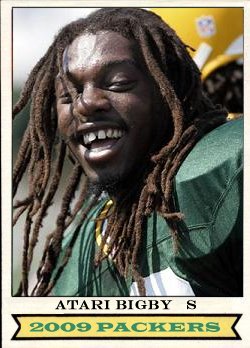When Aaron “will-he-or-won’t-he-report” Rodgers showed up for training camp at the end of July, he offered his critique of Packer management in recent years:
“I think there was a lot of things that transpired. This wasn’t just a draft-day thing. It started with a conversation in February, after the season ended. I just expressed my desire to be more involved in conversations directly affecting my job. Also, I wanted to help the organization maybe learn from some of the mistakes in the past, in my opinion, about the way some of the outgoing veterans were treated, and just the fact that we didn’t retain a number of players that I felt like were core players to our foundation, our locker room, high-character guys. I’m talking about Charles Woodson, Jordy Nelson, Julius Peppers, Clay Matthews, Randall Cobb, James Jones, John Kuhn, Brett Goode, T.J. Lang, Bryan Bulaga, Casey Hayward, Micah Hyde, guys who were exceptional players for us but great locker-room guys, high-character guys, many of them whom weren’t offered a contract at all or were extremely low-balled or were in my opinion not given the respect on the way out that guys of their status and stature and high character deserved.”
While there is much to criticize about bad draft picks and missed free agent signings by Packer management in the past decade, the list of players Rodgers cited as having gotten away reminds one that Arod should not be hired as GM any time soon. With the exception of the final two, defensive backs Casey Hayward (who celebrates his 32nd birthday today) and Micha Hyde, those former Packers were all past their peak and were better off being replaced. Here’s what we missed:
Woodson: 37 years old, played three years at safety, intercepted 10 passes and made one charity Pro Bowl.
Nelson: 33 years old, one year in Oakland with 63 catches with an 11.7-yard average.
Peppers: 37 years old, returned to Carolina for two seasons of 11 and five sacks.
Matthews: 33 years old, managed an empty eight sacks for the Rams in one season after not having reached that total in his last five years in Green Bay.
Cobb: 29 years old, 55 catches in Dallas and 38 in Houston earns him a return to Green Bay as Rodgers’ security blanket.
Jones: 30 years old, caught 73 passes with a 9.1-yard average in Oakland before returning to Green Bay for one final season of 50 catches.
Kuhn: 34 years old, spent two seasons (18 games) in New Orleans.
Goode: 32 years old, has not played since.
Lang: 30 years old, two years (19 games) in Detroit with one Pro Bowl on reputation.
Bulaga: 31 years old, 10 games for the Chargers in 2020.
Hayward: 27 years old, a major mistake by Ted Thompson to pass on Hayward who went on to start 75 games in five years in San Diego, intercepting 14 passes, making two Pro Bowls and thrice being named a second team All-Pro.
Hyde: 27 years old, has started 62 games in four years in Buffalo, nine picks, one Pro Bowl and one second team All-Pro. A solid player who was better than what the Packers had in that time.
So, aside from Hayward and Hyde, these fine old warriors had very little left in the tank, and it is clear why they were not retained. Yes, let’s have Rodgers making personnel decisions. What could go wrong?
Custom cards in Philadelphia styles.















































































